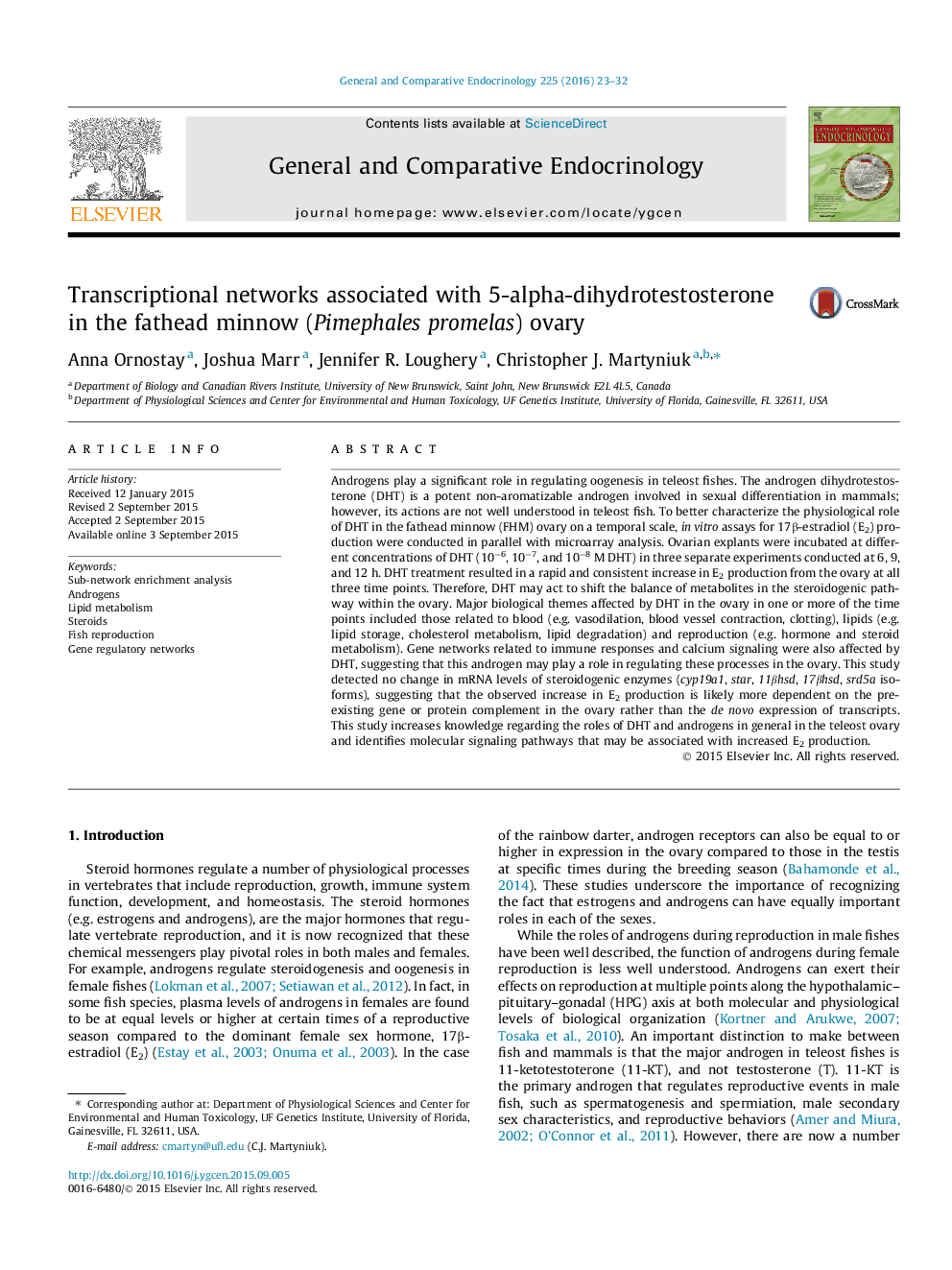| Article ID | Journal | Published Year | Pages | File Type |
|---|---|---|---|---|
| 2799874 | General and Comparative Endocrinology | 2016 | 10 Pages |
•Androgens play a significant role in oocyte development.•Dihydrotestosterone increased 17beta-estradiol production in the ovary.•Dihydrotestosterone affected gene networks related to blood, lipids and reproduction.•Dihydrotestosterone affects gene expression in a time-dependent manner.
Androgens play a significant role in regulating oogenesis in teleost fishes. The androgen dihydrotestosterone (DHT) is a potent non-aromatizable androgen involved in sexual differentiation in mammals; however, its actions are not well understood in teleost fish. To better characterize the physiological role of DHT in the fathead minnow (FHM) ovary on a temporal scale, in vitro assays for 17β-estradiol (E2) production were conducted in parallel with microarray analysis. Ovarian explants were incubated at different concentrations of DHT (10−6, 10−7, and 10−8 M DHT) in three separate experiments conducted at 6, 9, and 12 h. DHT treatment resulted in a rapid and consistent increase in E2 production from the ovary at all three time points. Therefore, DHT may act to shift the balance of metabolites in the steroidogenic pathway within the ovary. Major biological themes affected by DHT in the ovary in one or more of the time points included those related to blood (e.g. vasodilation, blood vessel contraction, clotting), lipids (e.g. lipid storage, cholesterol metabolism, lipid degradation) and reproduction (e.g. hormone and steroid metabolism). Gene networks related to immune responses and calcium signaling were also affected by DHT, suggesting that this androgen may play a role in regulating these processes in the ovary. This study detected no change in mRNA levels of steroidogenic enzymes (cyp19a1, star, 11βhsd, 17βhsd, srd5a isoforms), suggesting that the observed increase in E2 production is likely more dependent on the pre-existing gene or protein complement in the ovary rather than the de novo expression of transcripts. This study increases knowledge regarding the roles of DHT and androgens in general in the teleost ovary and identifies molecular signaling pathways that may be associated with increased E2 production.
Graphical abstractFigure optionsDownload full-size imageDownload as PowerPoint slide
